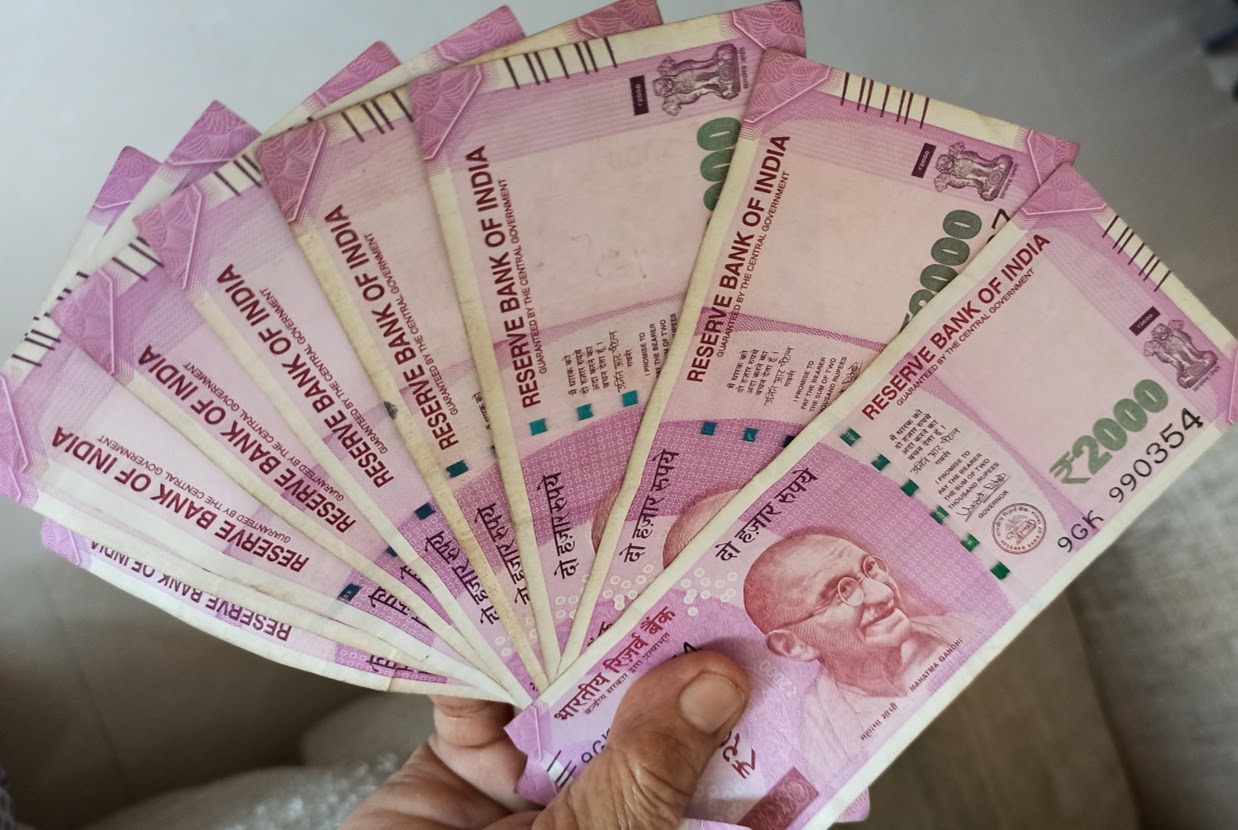BANKS
Tough ride for rupee this year
.Indian rupee falls to all-time low of 77.63 against US dollar amid negative forces from around the world; could edge closer to 79 mark in next couple of months.
.Indian rupee falls to all-time low of 77.63 against US dollar amid negative forces from around the world; could edge closer to 79 mark in next couple of months.

This week, the Indian rupee touched an all-time low of 77.63 against the US dollar, and expectedly, it made a lot of heads turn; the reason for the fall was cohesive negative forces from different parts of the world.
With the Russia-Ukraine war showing no signs of abatement, all the economies around the world are facing its brunt. Sanctions on Russia have disturbed the economic balance and supply chain disruptions have led to a rise in commodity prices, especially crude oil.
The European Union has been in talks to completely stop the import of oil and gas from Russia by the end of the year. Though it won’t be easy as it requires a unanimous vote from all members, it cannot be ruled out yet. With OPEC not making any efforts to increase production, these sanctions, which will likely remain even after the war stops, will increase supply-side issues and continue to weigh in on all emerging market currencies like the rupee. On the other hand, the slowdown in the Chinese economy can help in tempering energy prices to a certain extent.
In addition, the rising recession concerns across the globe have triggered a risk aversion mood in investors. Inflation has been a worry in the Covid recovery phase; the anxiety has increased further after the Bank of England commented that inflation in the UK can surpass 10% in the final quarter of 2022. With their GDP falling and added pressure from bond yields that are testing 7-year highs, the government is under tremendous pressure to provide support to the economy. The IMF has predicted that Britain will have the lowest growth and highest inflation among the major economies. The Bank of England has raised interest rates to 1% and is expected to raise them further.
Given the precarious situation in Euro zone and the UK, although the rupee has depreciated significantly against the USD, it has gained against the GBP, EUR, and even against other major currencies.
The lockdown imposed in China saw the Chinese yuan depreciate against the dollar by nearly 7% in the last three weeks. Historically, a depreciating yuan has always hurt emerging market currencies and thus can pressure the rupee further.
| Against Dollar | Year Till Date |
| Rupee | -4.2% |
| Singapore Dollar | -3.4% |
| Chinese Yuan | -6.5% |
| Thai Baht | -4.9% |
The most crucial factor that has been driving the global markets has, however, been the actions of the US Federal Reserve; with market participants expecting a 75bps hike in the most recent FOMC meeting, the 50 bps hike came in as a temporary relief. But with the monetary policy tightening expected to continue all through the year and well into 2023, an outflow of investments can be seen from riskier assets to safe-haven dollars.
US 10-year treasury yield has gone past 3%; US debt is rising and its liabilities now stand around $9 Trillion, 37.5% of its GDP. Concerns over rising inflation persist and the central bank needs to take appropriate steps to counter this and ensure that we don't see a repeat of the taper tantrum of 2013. The recent news of US CPI Inflation in April of 8.3% against the expected 8.1%, has put Fed under pressure for another rate hike of 50 bps in June.
The dollar index has also increased to a two-decade high of 104.95. Backed by rising oil prices and interest rate hikes from central banks around the world, the US dollar is expected to retain its robustness.
On the home front, the rupee has received some relief due to the LIC IPO and RBI intervention which prevented it from depreciating lesser in comparison to its Asian peers. Of late, FIIs and FPIs have exited domestic equity markets amid rising tensions putting more pressure on the rupee. Bleak market sentiments, rising geopolitical issues, and Brent price of around $110 per barrel have not been kind to the rupee which has fallen by more than 4% since January. RBI too has been trying to curb the volatility and also keep the markets steady. The surprise rate hike of 40 bps was one example that RBI is not comfortable with the large swings in markets.
Given the current global circumstances, the Indian rupee will continue to find the going tough for the rest of the year; it could edge closer to the 79.00 mark in the next couple of months before settling down in the 76-77 bracket.
(Ritesh Bhansali & Imran Kazi are Vice Presidents at Mecklai Financial)
